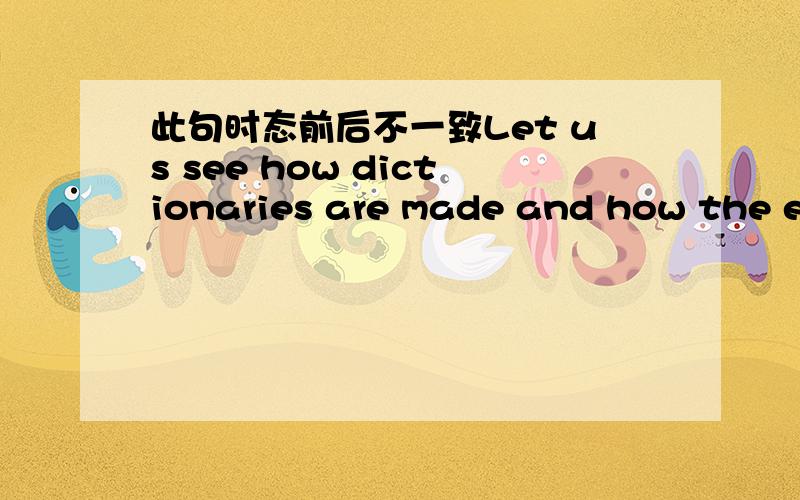此句时态前后不一致Let us see how dictionaries are made and how the editors arrive at definitions.前面的made用了过去式,可是后面的动词怎么又是原形呢?还有arrive at怎么会用在这儿?
来源:学生作业帮助网 编辑:作业帮 时间:2024/11/30 11:37:06

x�ݒ�N�@�_e�y~^��(v
]���-��E5"J$�F���2s�ӕ��mQ�Ɵ+��;�;��i<�䏷`�xkȍ��P�1��lC�^שN�5�QJ2�]"+���J�B5"��lI2%RV��z�*+zN
����#��tS�*�L[Czp����P� ��s ����Z�`
����gW�/Un����
G�+�t��M �_��
�K�m#.��;�������O٢��F�e��`��'���!��f߇v0b,��
�0*���d���<@K"����#��.�P�Ҍh�w� �}y�
%�BJ��!d.���D��s�'b�xwM^��]��-�J��O�ܬ���
m��{c1h�I���Q6��W��p���]bQ�d�l�M���J<��l2�I>���/�
此句时态前后不一致Let us see how dictionaries are made and how the editors arrive at definitions.前面的made用了过去式,可是后面的动词怎么又是原形呢?还有arrive at怎么会用在这儿?
此句时态前后不一致
Let us see how dictionaries are made and how the editors arrive at definitions.
前面的made用了过去式,可是后面的动词怎么又是原形呢?
还有arrive at怎么会用在这儿?
此句时态前后不一致Let us see how dictionaries are made and how the editors arrive at definitions.前面的made用了过去式,可是后面的动词怎么又是原形呢?还有arrive at怎么会用在这儿?
那个made并不是过去式 而是be +过去分词 表示被动的用法
how dictionaries are made = 字典是怎样被做出来的
how the editors arrive at definitions=那些编辑(意见)又是怎样达成一致的
通过翻译你就可以知道(arrive at=达成一致) 为何会用在这里
此句时态前后不一致Let us see how dictionaries are made and how the editors arrive at definitions.前面的made用了过去式,可是后面的动词怎么又是原形呢?还有arrive at怎么会用在这儿?
Let us see同义句 Let us [ ] [ ] [ ]
let us see的同意句
i did not like to drink tea,but i like to watch the tea art performance为什么此句前后时态不一致 还有the height of a twenty-story building什么意思
Let us go to see a film改为同义句
us,see,Beijing,let,go,opera,to 连词成句
see,let,first,pandas,us,the 连词成句
Let us see a film together.同义句转换 let us ------ --------- --------- --------together.
定语从句前后时态能不能不一致?详细回答
that加从句,前后时态可以不一致吗?
do you know who invented tea为什么前后时态不一致
Let‘s see pandas first.此句为______句.let后要接动词_______.
let me see it是什么时态
Let us see the pandas first.(改为同义句) ___ ___ seeing the panda first?
let us see the lions first的同义句?(How开头的问句)
go,teacher,us,see,the,let,old,and连词成句
go,teach,us,see,the,let,old,and连词成句是什么
Let us see dolphins first 的同义句 要What about 开头的